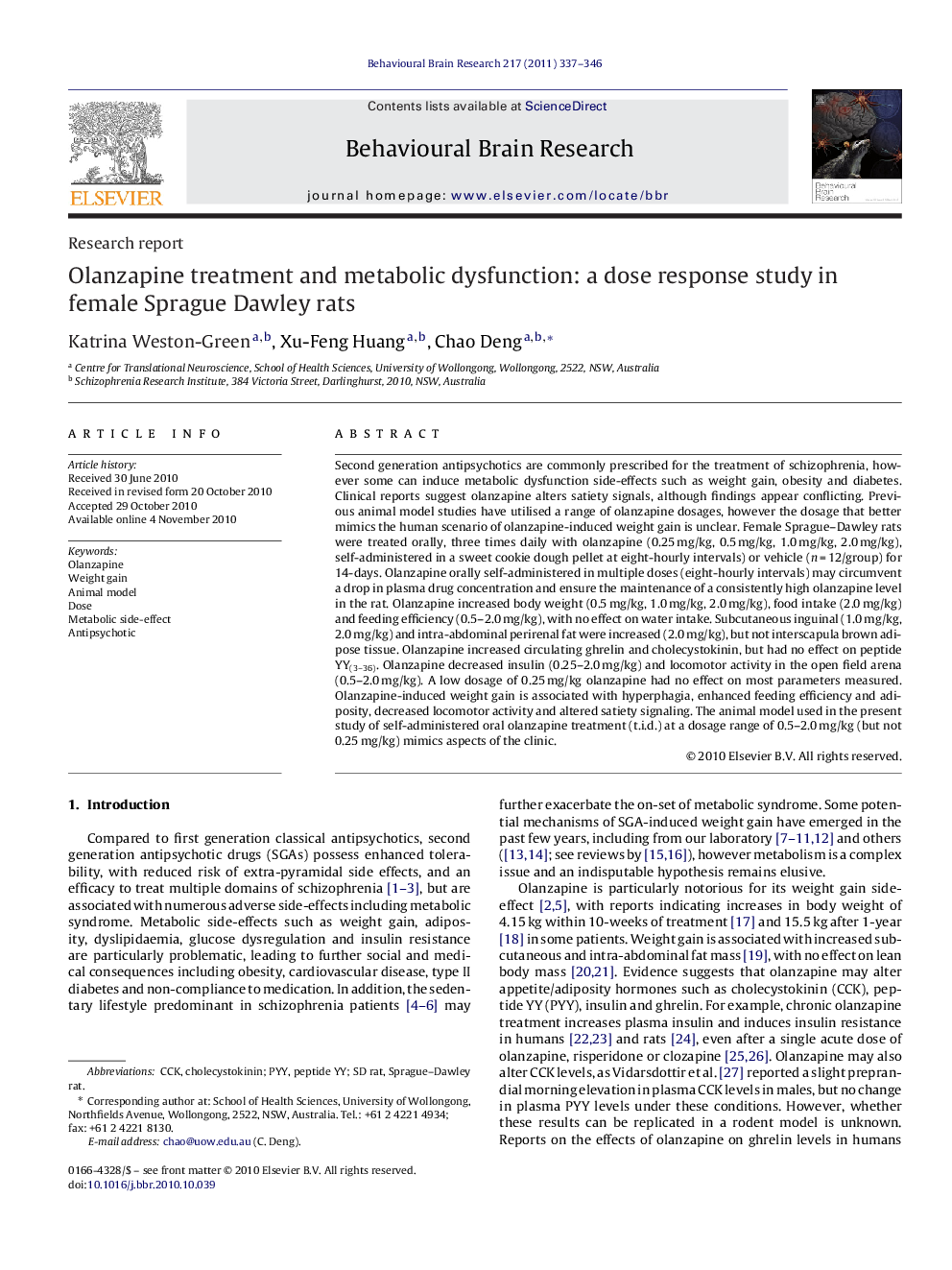| Article ID | Journal | Published Year | Pages | File Type |
|---|---|---|---|---|
| 6259988 | Behavioural Brain Research | 2011 | 10 Pages |
Second generation antipsychotics are commonly prescribed for the treatment of schizophrenia, however some can induce metabolic dysfunction side-effects such as weight gain, obesity and diabetes. Clinical reports suggest olanzapine alters satiety signals, although findings appear conflicting. Previous animal model studies have utilised a range of olanzapine dosages, however the dosage that better mimics the human scenario of olanzapine-induced weight gain is unclear. Female Sprague-Dawley rats were treated orally, three times daily with olanzapine (0.25 mg/kg, 0.5 mg/kg, 1.0 mg/kg, 2.0 mg/kg), self-administered in a sweet cookie dough pellet at eight-hourly intervals) or vehicle (n = 12/group) for 14-days. Olanzapine orally self-administered in multiple doses (eight-hourly intervals) may circumvent a drop in plasma drug concentration and ensure the maintenance of a consistently high olanzapine level in the rat. Olanzapine increased body weight (0.5 mg/kg, 1.0 mg/kg, 2.0 mg/kg), food intake (2.0 mg/kg) and feeding efficiency (0.5-2.0 mg/kg), with no effect on water intake. Subcutaneous inguinal (1.0 mg/kg, 2.0 mg/kg) and intra-abdominal perirenal fat were increased (2.0 mg/kg), but not interscapula brown adipose tissue. Olanzapine increased circulating ghrelin and cholecystokinin, but had no effect on peptide YY(3-36). Olanzapine decreased insulin (0.25-2.0 mg/kg) and locomotor activity in the open field arena (0.5-2.0 mg/kg). A low dosage of 0.25 mg/kg olanzapine had no effect on most parameters measured. Olanzapine-induced weight gain is associated with hyperphagia, enhanced feeding efficiency and adiposity, decreased locomotor activity and altered satiety signaling. The animal model used in the present study of self-administered oral olanzapine treatment (t.i.d.) at a dosage range of 0.5-2.0 mg/kg (but not 0.25 mg/kg) mimics aspects of the clinic.
Research highlightsⶠAn animal model of olanzapine-induced obesity by oral self-administration (three times/day). ⶠSelf-administration of olanzapine mixed with food, given at eight-hourly intervals may better mimic the clinic. ⶠOlanzapine increased ghrelin and CCK levels, and decreased insulin and locomotor activity. ⶠ0.5-2.0 mg/kg (three times/day) olanzapine in the rat replicates aspects of human metabolic dysfunction. ⶠA low dosage of 0.25 mg/kg (three times/day) olanzapine had no significant effect on body weight.
